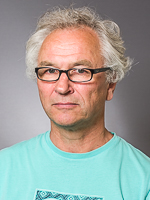The Orphanet database contains over 6000 unique rare diseases and about 250 are added annually. Even though each of the ultra-rare diseases affect less than 1 in 50 000 patients, in aggregate millions of people are affected.
We analyze Whole Genome Sequencing data searching for disease causing genetic variants in «novel disease genes», genes not yet known to cause human diseases when mutated.
We further explore the functional consequences of putative pathogenic variants by in vitro and in vivo modelling.
Our multidisciplinary project aims at revealing unique knowledge about the etiology of the diseases, which is crucial knowledge for the development of future therapy.
The research group is a part of Institute of Clinical Medicine, University of Oslo, and also the Research section at the Department of Medical Genetics, Oslo University Hospital.
Research projects
Molecular characterization of encephalopathies with onset in childhood
Severe encephalopathies of likely genetic origin are clinically heterogeneous with life-long morbidity. We have detected the disease-causing variant in about two-thirds of the families analyzed and documented the molecular cause of several novel disease entities.
Dysfunction of primary cilia in the etiology of congenital brain anomalies
We recently initiated a project to characterize the molecular basis of congenital brain anomalies caused by primary cilia dysfunction. In this project, we recruit patients who lack a molecular diagnosis after WGS-based diagnostic analyses.
Studying mouse knock-in models expressing the main Stormorken syndrome mutation
The only project without a focus on neurological diseases is our work on Stormorken syndrome. We have identified the cause of the syndrome and characterized a mouse line expressing the aberrant protein, STIM1 p.R304W. Our findings highlight the importance of STIM1 in the development and homeostasis of the skeleton and the skeletal muscle, and motivates further studies into how STIM1 R304W affects dental epithelial cell fate in mice.
Externally Funded Projects
Our research projects have received funding from the Norwegian National Advisory Unit on Rare Disorders. We have also received funding for PhD-students through The Research Council of Norway's Quota scheme.
Collaborators outside AMG
- N. Katsanis and E. E. Davis (Advanced Center for Translational and Genetic Medicine, Chicago, USA)
- C. Romanin (Joahnnes Kepler University Linz, Austria)
- P. Strømme (Department of Pediatrics, OUS)
- C.A.M. Progida (IBV, UiO)
- C.V. Esguerra (NCMM, UiO)
- H.L. Nilsen (Department of Microbiology, OUS)

